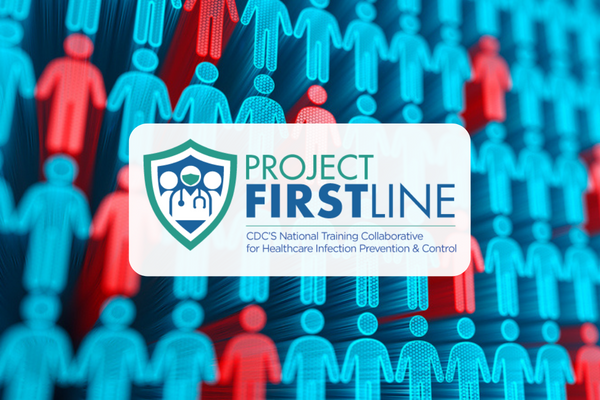This is the second of a two-part blog series presenting two fictional, but possible, case studies for you to consider. We also provide links to helpful resources from Project Firstline. Part one of this series is available here.

The Situation:
You are the Director of Disease Prevention and Control at your county health department. You recently responded to a report of a possible measles infection in a long-term care facility, transmitted by a child visitor – a grandchild of a resident - who did not receive their MMR vaccine on schedule due to COVID-19 pandemic-associated delays in providing standard care. This circumstance was reported to you by the Director of Nursing at the facility. Shortly after you heard from the facility, the child’s parent contacted you directly to inform you that she took both of her children to a pediatric outpatient clinic two days ago because her older child had a follow-up appointment after a sports-related injury. The youngest child did not begin showing the measles rash until yesterday, and just received her diagnosis today.
You have already reported the long-term care facility circumstance to the state department of health and have initiated contact tracing and isolation when needed. Fortunately, staff and residents were presumed to have immunity due to evidence of vaccination or age, but some visitors to the facility have not yet been accounted for. What new concerns do you have regarding a potential measles infection in a pediatric outpatient clinic? What infection prevention and control (IPC) questions do you anticipate the facility staff might have?

Things to Consider:
- Measles is highly contagious and can be spread beginning four days before the rash appears. This makes it highly likely the child was contagious while in the outpatient facility.
- Measles can spread to others through coughing and sneezing. This Project Firstline resource highlights important IPC practices for germs that live in the respiratory system.
- Vaccine or immunity status varies by age – refer to the first case study in this series for specific details based on individuals’ year of birth.
- It is possible that other children waiting for or receiving care at the pediatric clinic might have experienced delays and disruptions to their MMR vaccination schedule because of limited access to some healthcare resources during the COVID-19 pandemic.
- Contact tracing involves identifying and verifying measles immunity status of people who were in the pediatric outpatient facility and people they came into contact with following the potential exposure. This includes:
- Clinic healthcare workers and staff present two days ago;
- Parents and others who brought children for care;
- Others living in the same household with clinic staff, patients, and those accompanying the patients;
- Anyone these individuals might have come into close contact with following the potential exposure. This could include customers and staff at stores and restaurants, friends and neighbors visited, recreational facilities, churches, and any others.
Find more details about the common pathways, including people, that germs use to travel, on this CDC Project Firstline webpage.
The Situation, Continued:
It is a few months later, and the efforts of your health department to contact trace and isolate potentially infected individuals were successful. Only a small number of children present at the pediatric outpatient clinic were infected with measles, and all are fully recovered. In the aftermath of these incidents, you identify that it could be an opportunity to provide IPC education to the facilities in your community. What follow-up education or resources would you want to share with your facility partners? Prepare for a training event with your facility partner using Project Firstline’s training toolkits to help your facility partners learn to recognize infection control risks throughout their workday, so they can take action to protect their patients, themselves, and their coworkers.
Review pathways and reservoirs with facility staff using these infographics. To follow up on the recent outbreak, you might consider focusing on Respiratory System as well as how germs spread on Dry Surfaces.
Have your partners test their knowledge with these interactive resources:
- https://www.cdc.gov/infectioncontrol/projectfirstline/healthcare/interactive-Outpatient.html
- https://www.cdc.gov/infectioncontrol/projectfirstline/healthcare/interactive-Nurses-Station.html
Visit the CDC Project Firstline website for more resources on infection prevention in healthcare settings here.
For more information on measles: https://www.cdc.gov/vaccines/pubs/surv-manual/chpt07-measles.html.



